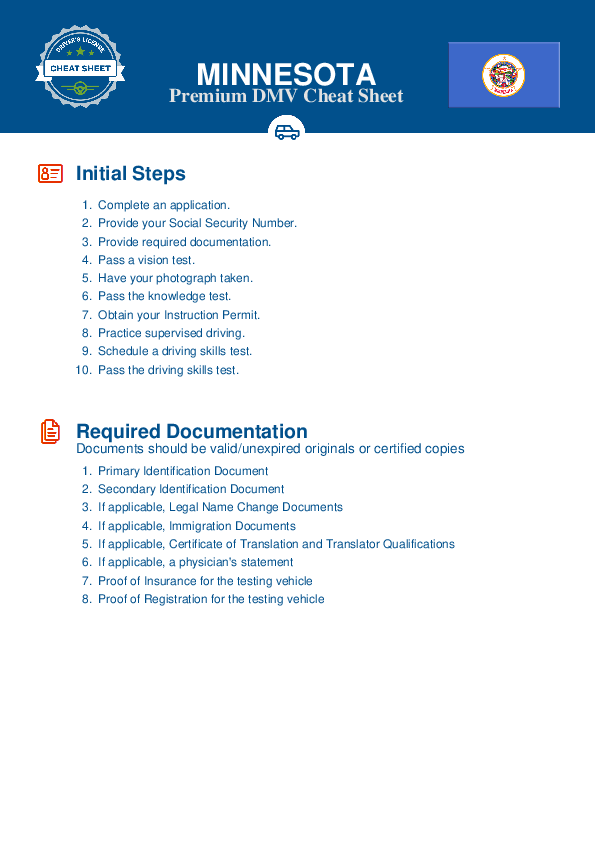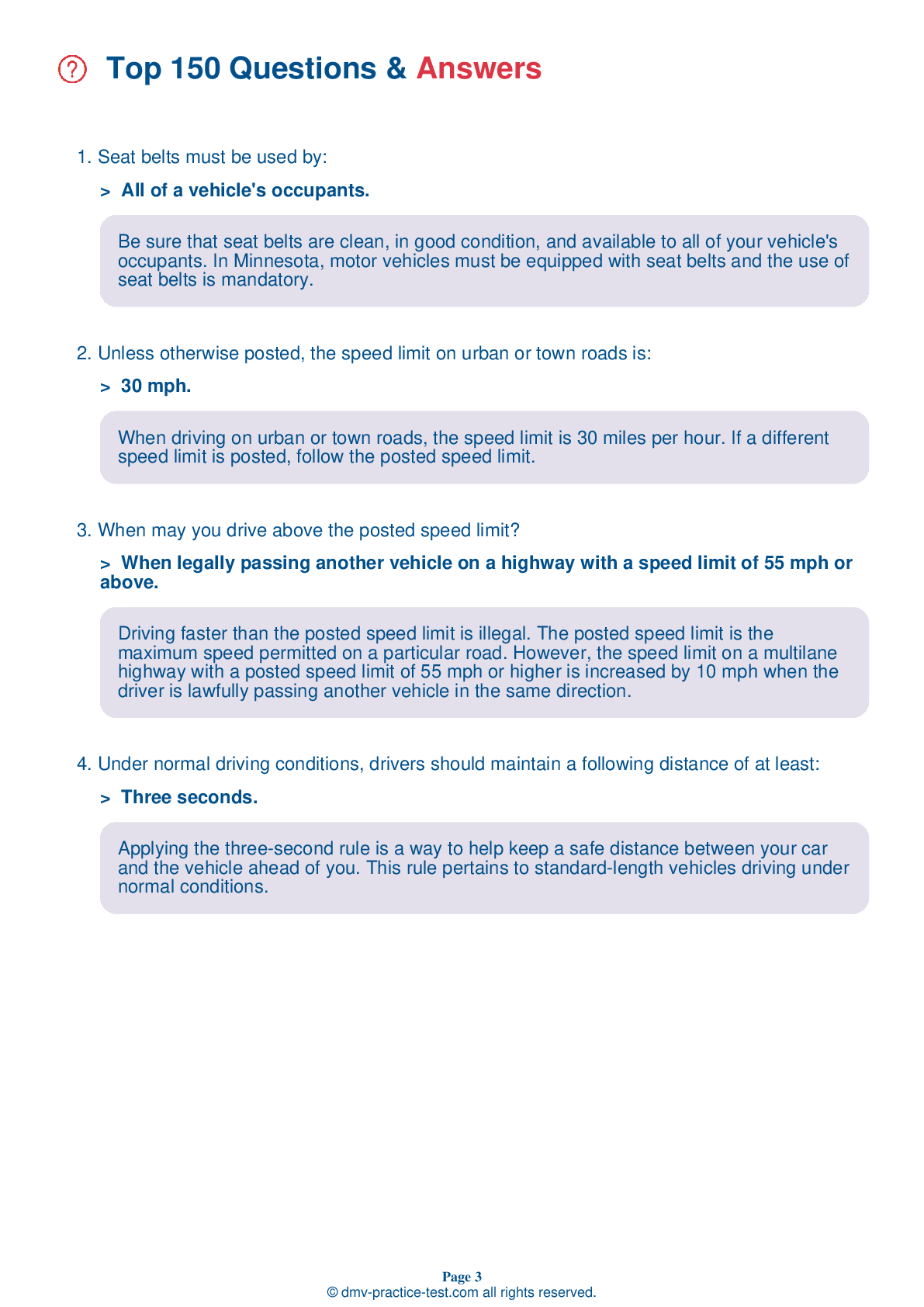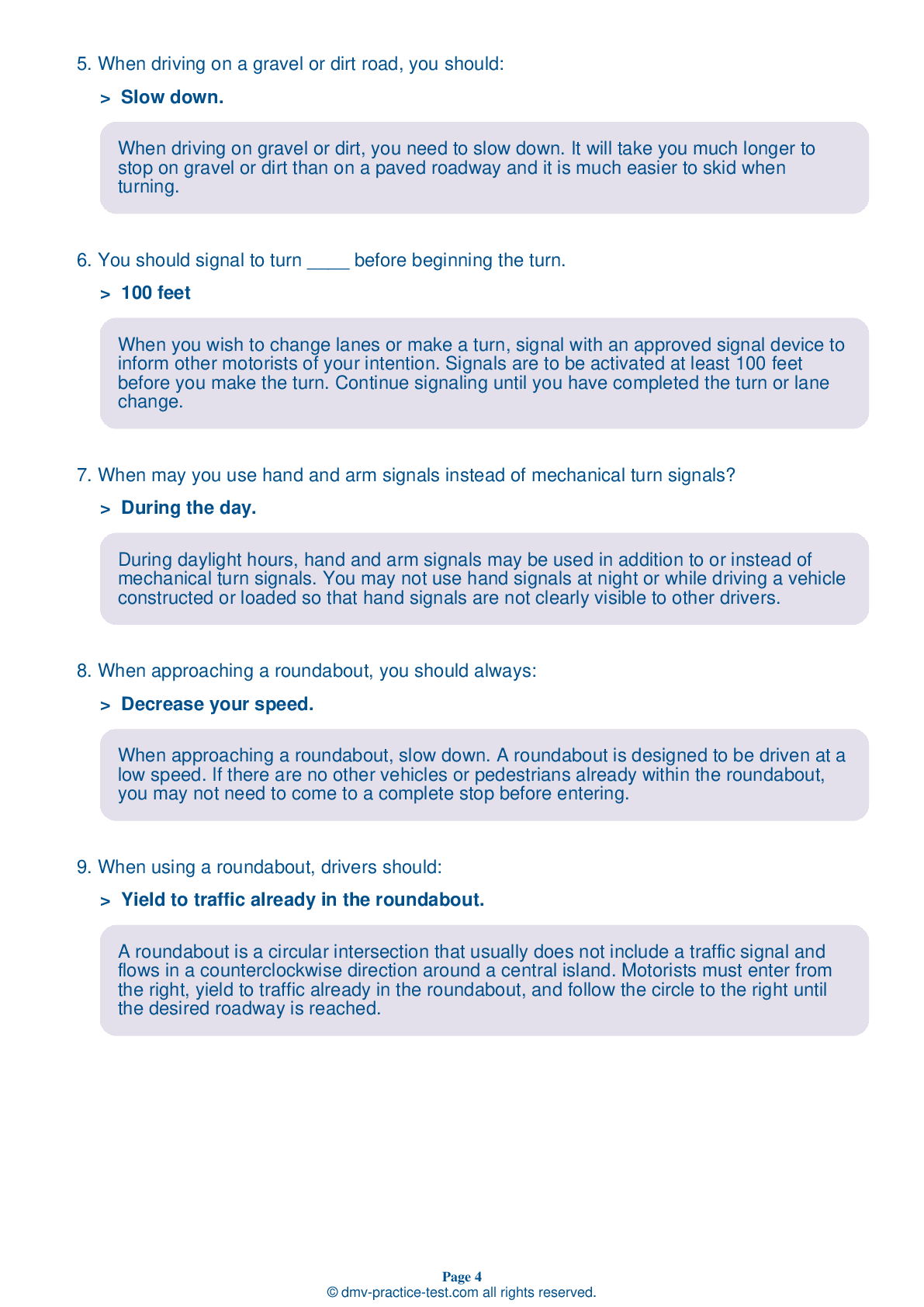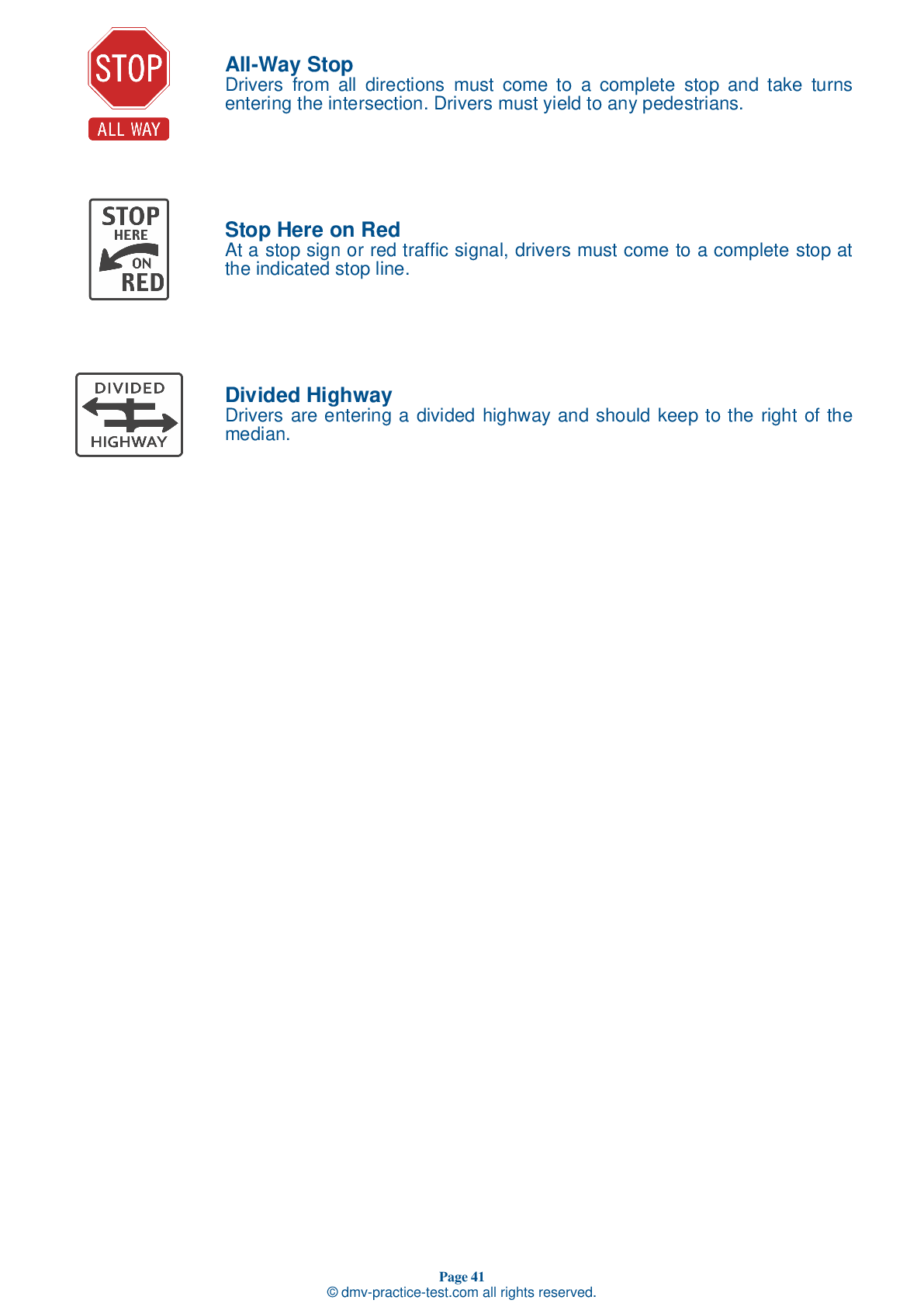FREE Minnesota DMV Practice Test #19 Page 3 of 5
The Minnesota DMV practise examinations have been updated for January 2025. It includes questions based on the Minnesota Driver Handbook's most essential traffic signals and laws for 2025. Use actual questions that are very similar (often identical!) to the DMV driving permit test and driver's licence exam to study for the DMV driving permit test and driver's licence exam.
On the practise exam, each question gets a tip and explanation to help you remember the concepts. The written component of the official Minnesota DMV test will include questions about traffic rules, traffic signs, and driving statutes, as well as knowledge from the Driver Handbook.
To obtain a passing grade, you must correctly answer 32 of the 40 questions. To help you prepare for your instruction permit or driver's licence, take our Minnesota DMV practise test.
The DMV exam is available in several languages.
Using any kind of testing assistance will result in an automatic fail, and the DMV may take additional action against your driver's licence, so stay away from it.
17 . If you are involved in a serious motor vehicle crash:
If you are involved in a crash, move your vehicle off of the road and stop, if possible. If anyone is injured, call 911 and provide appropriate help. You must report the crash to law enforcement if there is an injury, a death, and/or more than $1,000 in property damage (or more than $200 worth of damage made to non-vehicle government property, such as signs or guardrails).
18 . To help relieve fatigue on a long trip, it is a good idea to:
To avoid becoming fatigued while taking a long trip, stop every two hours for a short break. If you become drowsy, pull off the road and park in a safe place to take a nap, or find a room to stay for the night.
19 . When driving in fog, you should use your low beam headlights:
You should always use your low beam headlights when driving in fog. High beam headlights may cause the light to reflect off of the fog and into your eyes.
20 . You are turning onto a two-lane road divided by a broken yellow line. You know immediately that:
Yellow centerlines are used to separate traffic moving in opposite directions. Broken lines may be crossed to pass slower-moving traffic when it is safe to do so.
21 . Allow a larger space cushion than usual when stopping:
You should allow more space in front of your vehicle than usual when you are stopped on an uphill slope. If the vehicle in front of you rolls backward toward your vehicle when traffic begins to move again, it is less likely that there will be a collision.
22 . Before changing lanes on a multilane highway, you should:
Before changing lanes, you should look in your rearview and side mirrors to make sure no one is trying to pass you. You should also look over your shoulder to make sure that no one is in your blind spot.
23 . Your blind spot is the area of the road:
Blind spots are areas that a driver cannot see without moving their head. They can be located to the sides of and behind a vehicle.
24 . You should be cautious when passing a bicycle because:
You should always be cautious when passing a bicycle because the cyclist may have to swerve into traffic to avoid an object on the road. Always be particularly careful when driving near bicyclists.
Need Car Insurance? No problem!
Compare the best rates in Minnesota and find a personalized policy that meets your needs.
1. Are You Currently insured ?
2. Married ?
3. Do you own your Home?
4. Do you have more than 1 car ?
5. Have you or a Family Member Honorably Served in U.S. Military ?
6. Your Name
7. Age
8. Zip code
IMPORTANT REMINDER:Auto Insurance is Mandatory to drive in Minnesota. Get covered before you hit the road to avoid any fines.
Ranked by best match



